
Nvidia Announces GeForce GTX 1080 Ti, $499 GTX 1080
Nvidia has today announced the GeForce GTX 1080 Ti graphics card, new SKUs of the GTX 1080 and GTX 1060 that feature faster-than-before memory clock speeds, and a price drop for the GTX 1080. Also announced were a range of new toolkits and features related to DirectX 12 and updates to Nvidia's GeForce Experience software.Revealed at GDC 2017, the GTX 1080 Ti features the same GP102 GPU found in the Titan X Pascal and just as many cores. On the 12 billion transistor die, there are six Graphics Processing Clusters sporting six Streaming Multiprocessors each, although two are disabled leaving us with a total of 28, which equates to 3,584 CUDA cores and 224 texture units. Interestingly, the clock speeds are slightly higher than the Titan X: 1,480MHz base and 1,582MHz boost versus 1,417MHz and 1,531MHz respectively. Nvidia reckons 2GHz is achievable via overclocking, and demonstrated this onstage - this tallies with what we've seen from previous Pascal-based parts. The TDP is 250W, as expected.
At the back-end, one of the 12 32-bit memory controllers found on Titan X is no longer present, giving us a 352-bit interface. The associated ROPs and L2 cache segments are thus also lost, giving us 88 ROPs and 2,816KB of cache. The GDDR5X frame buffer also drops to 11GB, though this is 3GB more than that offered by the GTX 1080. Interestingly, though, memory bandwidth is actually higher than on the Titan X, thanks to new 11Gbps GDDR5X that's been co-developed with Micron. This makes for 484GB/sec, 64GB/sec more than the Titan X has. The GTX 1080 Ti is actually going to be faster than the Titan X, then – the reduced ROP and cache count and 1GB less memory is unlikely to be a limiting factor in many situations. Nvidia claims that the GTX 1080 Ti is roughly 35 percent faster than the GTX 1080, which is the biggest leap in performance from a Ti card so far.
| Nvidia Titan X 12GB | Nvidia GeForce GTX 1080 Ti 11GB | Nvidia GeForce GTX 1080 8GB | |
| GPU | |||
| Architecture | Pascal | Pascal | Pascal |
| Codename | GP102 | GP102 | GP104 |
| Base Clock | 1,417MHz | 1,480MHz | 1,607MHz |
| Boost Clock | 1,531MHz | 1,582MHz | 1,733MHz |
| Stream Processors | 3,584 | 3,584 | 2,560 |
| Layout | 6 GPCs, 28 SMs | 6 GPCs, 28 SMs | 4 GPCs, 20 SMs |
| Rasterisers | 6 | 6 | 4 |
| Tesselation Units | 28 | 28 | 20 |
| Texture Units | 224 | 224 | 160 |
| ROPs | 96 | 88 | 64 |
| FP64 Performance | 1/32 FP32 | 1/32 FP32 | 1/32 FP32 |
| Transistors | 12 billion | 12 billion | 7.2 billion |
| Die Size | 471mm2 | 471mm2 | 314mm2 |
| Process | 16nm | 16nm | 16nm |
| Memory | |||
| Amount | 12GB GDDR5X | 11GB GDDR5 | 8GB GDDR5X |
| Frequency | 1.25GHz (10Gbps effective) | 1.375GHz (11Gbps Effective) | 1.25GHz (10Gbps effective) |
| Interface | 384-bit | 352-bit | 256-bit |
| Bandwidth | 420GB/sec | 484GB/sec | 320GB/sec |
| Card Specifications | |||
| Power Connectors | 1 x 6-pin, 1 x 8-pin PCI-E | 1 x 6-pin, 1 x 8-pin PCI-E | 1 x 8-pin |
| Stock Card Length | 267mm | 267mm | 267mm |
| TDP | 250W | 250W | 180W |
The card will launch first as a Founders Edition card, which has the usual anodised silver and black aluminium, vapour chamber cooler design. That said, Nvidia says it has improved the cooler over that used on the GTX 1080, claiming that at the same power level you'd see a 2.5 dB(A) decrease at the same temperature or a 5°C reduction at the same fan speed. Remember, however, that the two compared cards do not actually have the same power level. The PCB has also seen some improvements, with each of the seven power phases now using a double dualFET design for improved efficiency (14 dualFETs in total). Power is received via a 6-pin/8-pin PCI-E power combination, and display outputs includes a trio of DisplayPort 1.4 connectors and one HDMI 2.0 port – DVI has now been dropped entirely.
The Founders Edition card will launch next week, this time without the usual increase over the MSRP, which has been set at $699 - a move sure to infuriate anyone who splashed out $1,200 on a Titan X. UK pricing is yet to be announced, but £699 seems likely based on the exchange rates we're seeing. Update: UK pricing has indeed been confirmed as £699 including VAT. Shortly after launch, all the usual board partners will release a variety of custom SKUs at a variety of price points.
As well as the GTX 1080 Ti, Nvidia also revealed the GTX 1080 11Gbps OC, a new SKU that takes advantage of the newly developed 11Gbps GDDR5X memory, and the GTX 1060 9Gbps OC, which again is simply the same GPU paired with new, faster memory. Pricing and launch dates for these SKUs are still to be confirmed. However, Nvidia CEO Jen-Hsun Huang used his time onstage at GDC to reveal a price drop for the GTX 1080, which now has an MSRP of $499. UK pricing was not confirmed, but this is equivalent to just over £400 excluding taxes at the time of writing. As such, a price of around £500 seems likely once taxes are taken into account, which makes for a price drop of about £70.
Nvidia also used GDC to make a series of further announcements. First up was a set a new developer tools, mostly related to DirectX 12. Nvidia's particle-based simulation technique, FleX, and its grid-based fluid solver, Flow, both now have DX12 support. The company will also be extending its GameWorks programme to cover the Amazon Lumberyard engine. Other tools include an update to the debugging and profiling tool Nvidia Nsight, now at version 5.3, giving it full DX12 support. A brand new tool called Nvidia Aftermath was announced as well, designed specifically for DirectX 12 games as a means of better classifying GPU crashes to help developers more clearly identify bugs. Nvidia is working with Microsoft to have it standardised in DirectX 12, and it will also be built into Unreal Engine 4 and the Amazon Lumberyard engine. Lastly, Nvidia has made a GeForce plugin for Microsoft's Pix for Windows tool, affording developers further insights into how games are using DirectX 12 with GeForce GPUs.
VR continues to remain a hot topic, and Nvidia had some news in this department too. Firstly, the VRWorks programme and all the associated tools are gaining DX12 support, and will also be coming to the Unity engine. The major announcement, however, is FCAT VR, a new tool designed mainly for reviewers ourselves that taps into the performance APIs of VR headsets like the HTC Vive and Oculus Rift to give a detailed, frame-by-frame analysis. With a user-friendly GUI and a data analysis tool, it'll allow us to properly benchmark VR titles and reveal where, when, and how often frames are being dropped and ultimately how suitable cards are for VR gameplay.
Finally, a few new features related to GeForce Experience were also revealed. Nvidia Ansel, the company's in-game photography tool, is to be incorporated into Amazon Lumberyard, and support for Ghost Recon Wildlands is coming too. Furthermore, a public SDK for Ansel will also be released, allowing developers of any game to potentially take advantage of the tool. Meanwhile, ShadowPlay, which is Nvidia's in-game capture tool that leverages GeForce hardware to record gameplay, is to gain a new feature dubbed ShadowPlay Highlights. An SDK is being released, allowing developers to build ShadowPlay support directly into games, with the end result being automatic capturing of prime moments, for example boss kills in single-player games or killstreaks in multiplayer titles. Users will be able to review, trim, and upload their clips to social media.

MSI MPG Velox 100R Chassis Review
October 14 2021 | 15:04

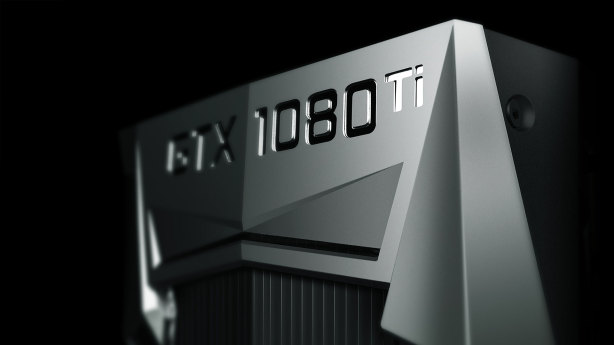
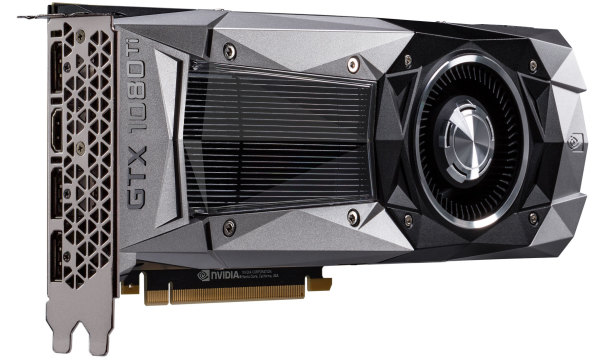
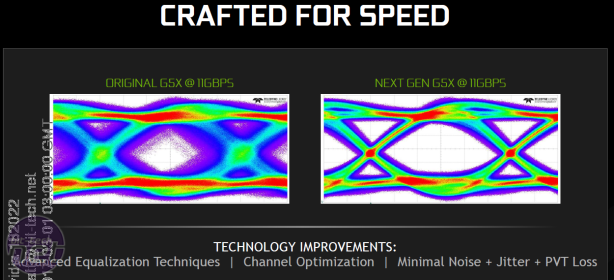
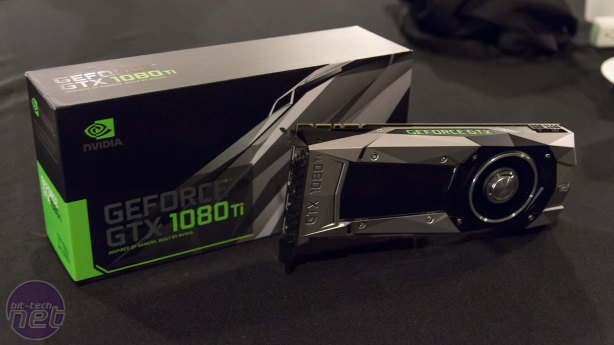
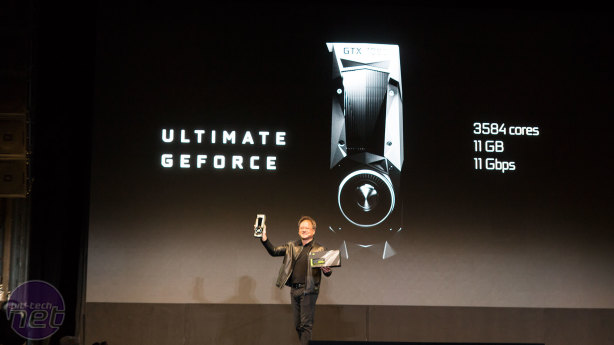
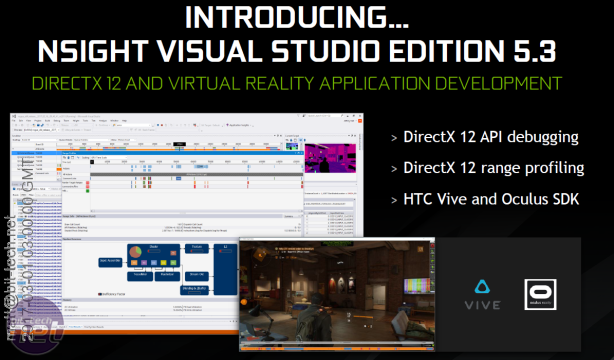
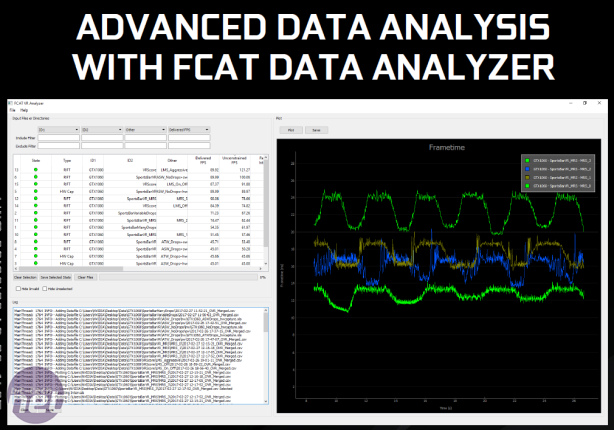
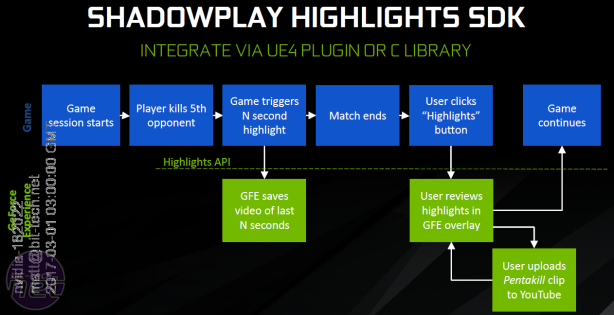








Want to comment? Please log in.